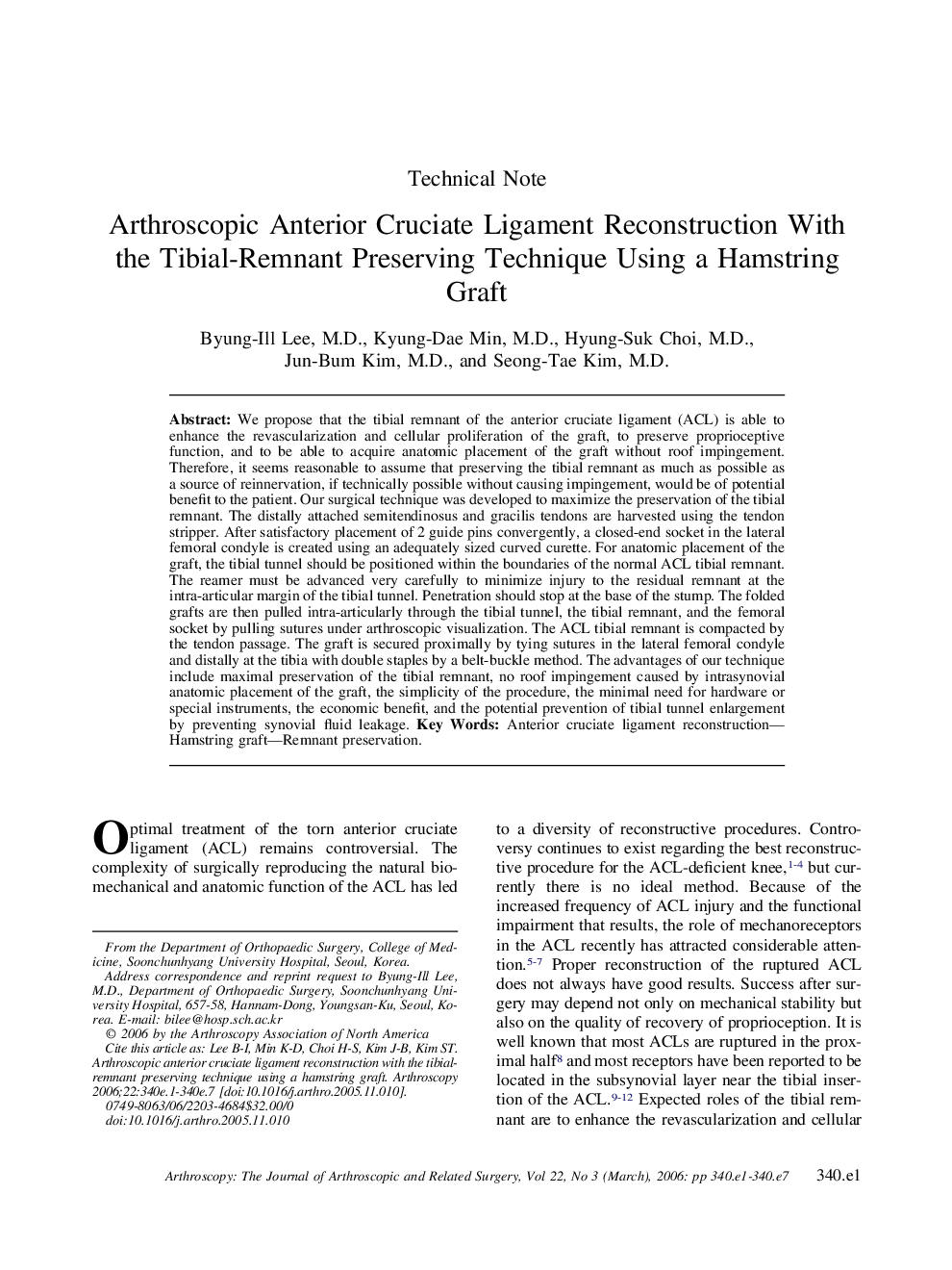| Article ID | Journal | Published Year | Pages | File Type |
|---|---|---|---|---|
| 4047480 | Arthroscopy: The Journal of Arthroscopic & Related Surgery | 2006 | 7 Pages |
Abstract
We propose that the tibial remnant of the anterior cruciate ligament (ACL) is able to enhance the revascularization and cellular proliferation of the graft, to preserve proprioceptive function, and to be able to acquire anatomic placement of the graft without roof impingement. Therefore, it seems reasonable to assume that preserving the tibial remnant as much as possible as a source of reinnervation, if technically possible without causing impingement, would be of potential benefit to the patient. Our surgical technique was developed to maximize the preservation of the tibial remnant. The distally attached semitendinosus and gracilis tendons are harvested using the tendon stripper. After satisfactory placement of 2 guide pins convergently, a closed-end socket in the lateral femoral condyle is created using an adequately sized curved curette. For anatomic placement of the graft, the tibial tunnel should be positioned within the boundaries of the normal ACL tibial remnant. The reamer must be advanced very carefully to minimize injury to the residual remnant at the intra-articular margin of the tibial tunnel. Penetration should stop at the base of the stump. The folded grafts are then pulled intra-articularly through the tibial tunnel, the tibial remnant, and the femoral socket by pulling sutures under arthroscopic visualization. The ACL tibial remnant is compacted by the tendon passage. The graft is secured proximally by tying sutures in the lateral femoral condyle and distally at the tibia with double staples by a belt-buckle method. The advantages of our technique include maximal preservation of the tibial remnant, no roof impingement caused by intrasynovial anatomic placement of the graft, the simplicity of the procedure, the minimal need for hardware or special instruments, the economic benefit, and the potential prevention of tibial tunnel enlargement by preventing synovial fluid leakage.
Related Topics
Health Sciences
Medicine and Dentistry
Orthopedics, Sports Medicine and Rehabilitation
Authors
Byung-Ill M.D., Kyung-Dae M.D., Hyung-Suk M.D., Jun-Bum M.D., Seong-Tae M.D.,
